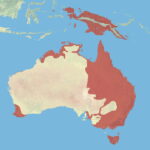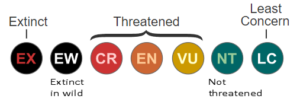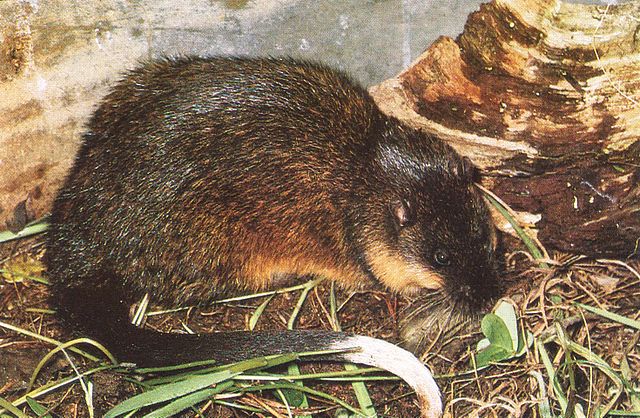If you looked at the picture and thought that looks like a rat, you may be interested to know that until fairly recently, this critter was known as the Australian water rat. In a PR exercise, it was renamed rakali because anything-rat is commonly regarded as filthy vermin. This creature is actually Hydromys chrysogaster (not Rattus rattus, the common urban rat).
Page Contents
Background

The rakali is a rodent which has evolved features which are suited an aquatic existence. It is a relatively large (up to 40 cm excluding tail) with broad partially-webbed hind-feet and water-repellent fur. The body is streamlined, with small ears and eyes, and colour is variable. The tail is thick and usually tipped white.
Rakali are found in parts of Australia where there is sufficient reliable water in rivers, creeks and irrigated areas.
Services
The rakali is largely carnivorous , feeding mostly on crustaceans, aquatic insects, and small fish, but it also eats plants and fungi, the spores of which are then spread around the soil through their droppings. The fungi helps introduce nutrients into the soil and thus promote native plant growth and resilience to unfavourable events in the ecosystem.
Rakalis are one of the few native species which is capable of eating the seriously invasive pest, the cane toad (Bufo marinus) . In one set of observations, rakali were targeting the biggest toads, flipping them over, slicing open their abdomen, and removing and eating their heart and liver. Cane toads were introduced into Australia in the 1930s in an unsuccessful experiment in controlling cane beetles. They are prolific breeders and the original release of about 2000 cane toads, there is is now an estimated population of about 200,000,000. They are voracious feeders and will eat almost anything that can fit into their mouths. They can survive in many different environments and and are widening their distribution in Australia, leaving a trail of environmental damage as they go. To avoid being eaten themselves, cane toads have a very effective adaptation. They are toxic at all life stages - from eggs to adults. Adults have large swellings called parotid glands on each shoulder behind their eardrums. This is where they carry a milky-white toxin. Their skin and other glands are also toxic. This toxin is capable of killing many would-be predators, and other animals learn to leave them alone. But not until after the damage is done. They typically devastate local native predators by 90% within a few months of arrival.
Summary of services provided for us
- Rakalis are an Australian native predator of the invasive cane toad which is an extremely serious pest in parts of Australia.
- Rakali pelts have been prized and utilised for their softness and water repellent qualities.
- Rakali limit the populations of prey such as the yabbie which damages irrigation infrastructure.
- Rakali distribute fungal spores.
Threats to the services?
- Localised declines in populations of H. chrysogaster have been noted in inland waterways affected by salinity and degradation.
- Loss of habitat due to land clearing
- The water-rat prefers slower-moving waters to faster flowing river channels, so flooding has some potential to affect this species.
- Predation by introduced species such as cats and foxes
- Caught and drowned in fish and crab traps laid by humans
- Drought conditions decrease their life span, and limit their population stability because they can't produce enough viable young in the limited lifespan available to them.

Despite the above, the rakali is a resilient species and has an IUCN status of Least concern.
What can we do to retain these services?
The rakali were threatened by hunting until a protection order with exceptions was placed on them in 1938. The exceptions were removed in late 1960s.
There is currently (2021) a court case in Australia concerned with water planning regulations in the Murray-Darling complex taking into account environmental health. This case will have a direct effect on rakali numbers in this important region.1




